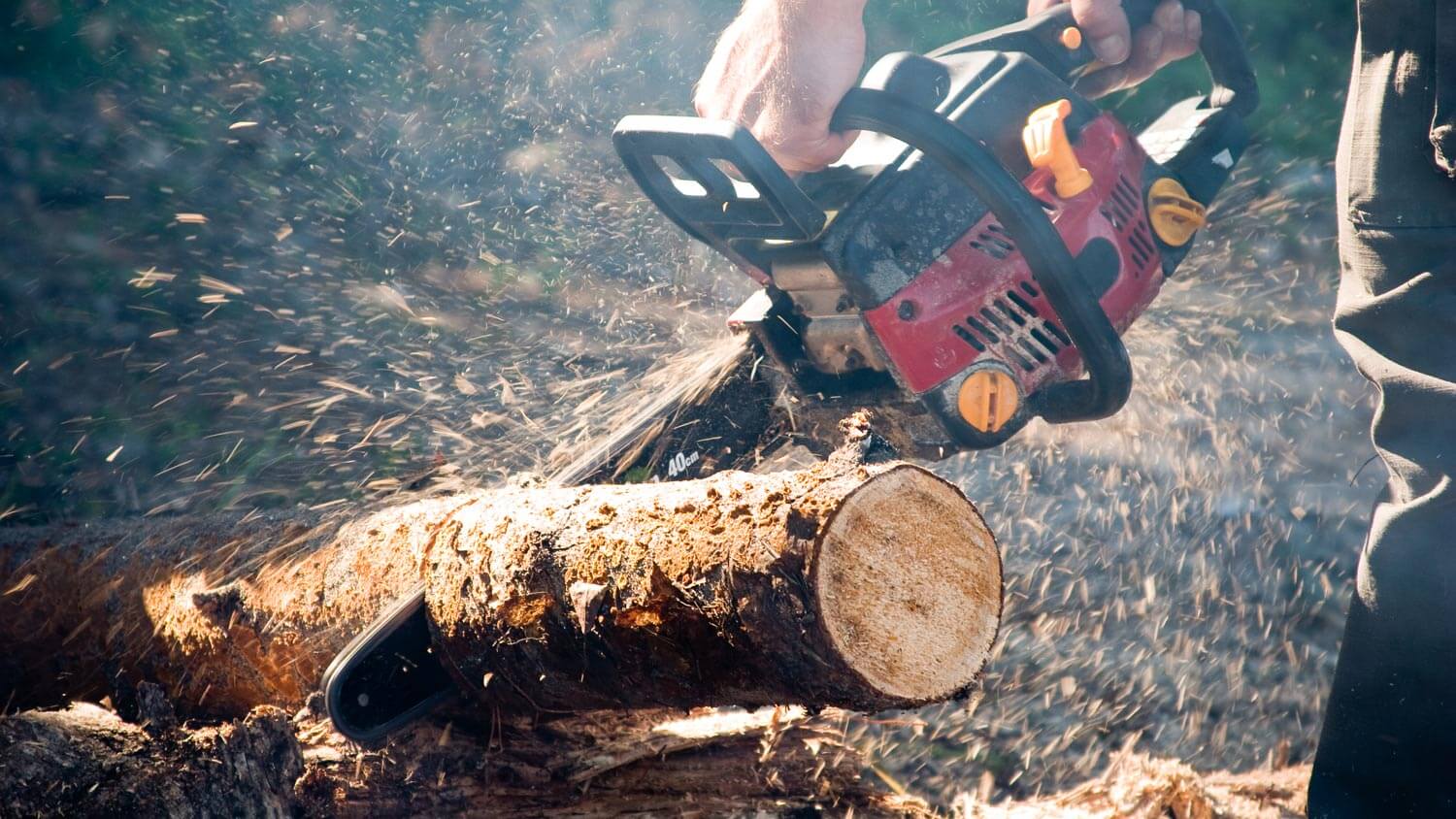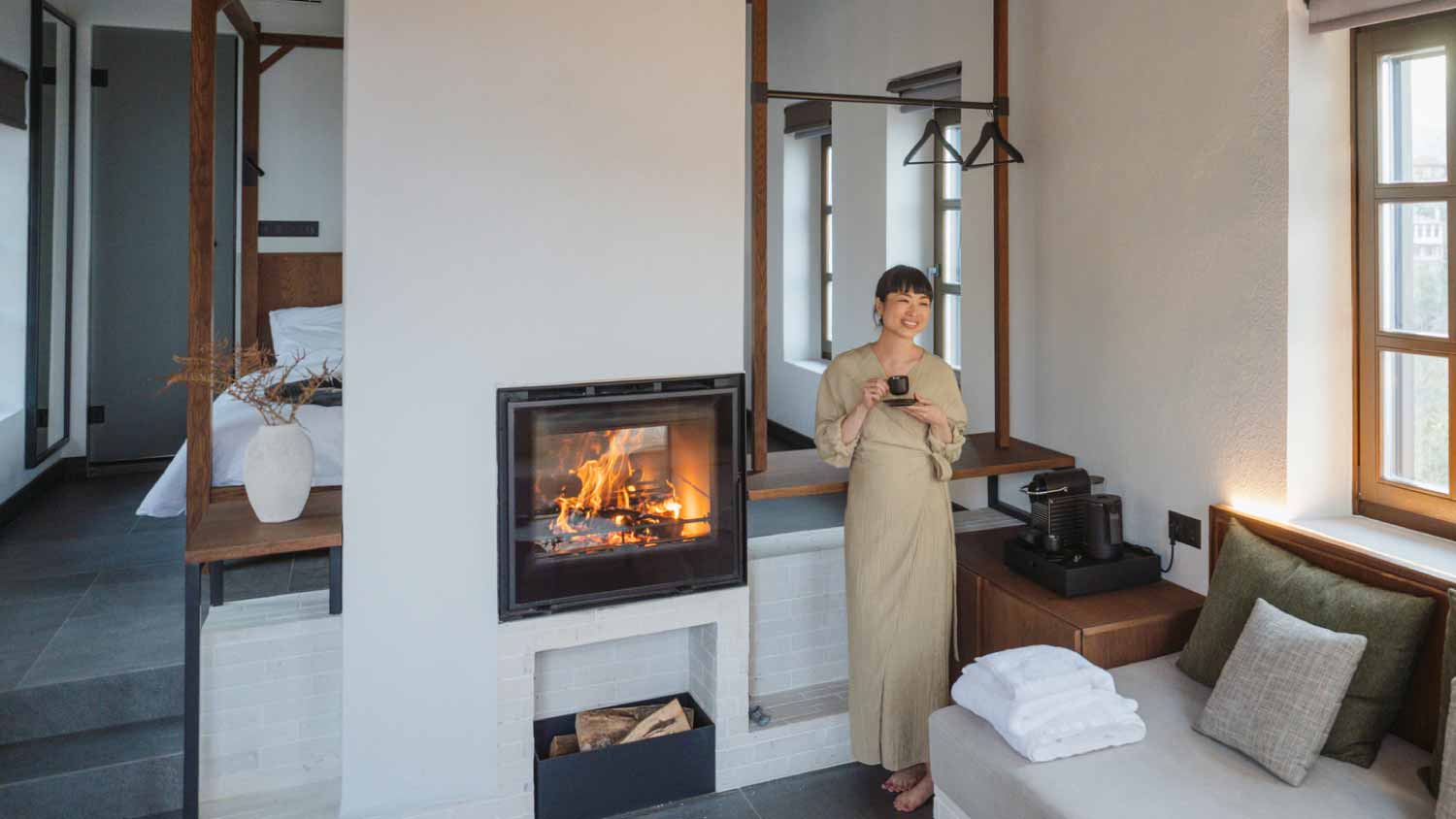
Want a safer, cleaner alternative to your traditional fireplace? Use this guide to determine the cost to convert a fireplace to gas in your home.
Before you fire up the fireplace, make sure you're burning the right wood


On a cold winter day, sitting by a roaring fire warms your body and soul. The secret to a safe and warm fire is knowing what the best woods are for fireplaces and what woods are best to avoid. Skip the types of wood that produce a lot of smoke and creosote. Our guide to the worst and best wood for a fireplace will help you choose the right fuel for a long-lasting, clean-burning fire.
Not all types of woods are created equally. They fall into two broad categories: Hardwoods and softwoods. Hardwoods come from deciduous trees, which drop their leaves in the fall. Softwoods come from evergreen trees, also known as conifers.
Hardwood is denser than softwood, so it burns more slowly and produces more heat for a longer period. Softwood, on the other hand, is less dense and tends to burn brightly and quickly.
When you touch a pine tree or another evergreen tree, you often get sticky sap all over your hands. That’s because softwoods have a higher resin and moisture content than hardwoods do. The higher a wood's resin and moisture content, the more creosote it produces when burned.
Along with being either a hardwood or softwood, wood can be either green or seasoned. Green wood is fresh wood. It's harder to light, burns quickly and produces more smoke.
Seasoned wood has been set aside to cure, so the moisture evaporates. Always choose seasoned, or dry, wood, to burn in your fireplace for a roaring flame.

The best type of wood for your fireplace is any type of hardwood. A few features make hardwood ideal for an indoor fire.
Wood from deciduous trees is typically dense, which means it contains more wood than less dense varieties, which may have higher moisture and resin content. Hardwood's higher density means it burns slowly and produces a considerable amount of energy, or heat, when burned.
Hardwoods are also typically less smoky than softwoods. They can be trickier to light, but once ignited, burn slowly for hours.
When choosing a hardwood for your fireplace, make sure it's well-seasoned, which means it's had plenty of time to dry out. Hardwoods often need a year or two to fully season, but that length of time varies depending on wood type.
Examples of hardwoods include:
Oak: Oak is one of the densest woods around, making it an ideal pick for a fireplace. It burns slowly with a low flame and high heat. While oak can be a great pick for a fire, oak trees are slow growers and older trees are endangered. To ensure responsible harvesting practices, only burn oak from Forest Stewardship Council-certified forests.
Ash: Ash is another long-burning, low-smoke producing hardwood. It seasons more quickly than oak but can be more difficult to source.
Cherry: The wood from cherry trees (and other fruit trees, such as apple and pear) produce hot, long-lasting fires. They're also known for producing smoke with a more appealing odor than other types of hardwood.
Birch: Birch is another hardwood that produces an appealing scent when burned. It has a shorter drying time than other hardwoods, usually six months or less.
Maple: Maple wood burns similar to ash. It's often easier to find than ash.
Another rule of thumb to follow when looking for the right wood for your fireplace is to buy local. The United States Department of Agriculture recommends that you buy firewood where you plan to burn it. Transporting wood out-of-state or even from one town to another introduces the risk of bringing invasive insects and disease to your area.
Softwoods are not ideal types of wood to burn in a fireplace. They are less dense than hardwoods, meaning there is less wood content.
Softwoods also contain a lot of resin, or sap that releases smoke when burned. As the thick, dark, and heavy smoke wafts through your chimney, it causes creosote to build up. Creosote is a highly flammable substance that can cause chimney fires if left unchecked.
Softwoods ignite faster and more easily than hardwoods, which can make them appealing, particularly for beginners. But that quicker ignition and burn time means that their fire can be spent almost as soon as it starts. A faster burn time can also mean bigger and more difficult to control flames.

Green wood is the term used for wood that has recently been cut down. Freshly cut wood still contains a significant amount of moisture, so it is one of the worst choices for burning.
Not only does all the moisture make it harder to burn (and causes a lot of smoke), but burning this kind of wood can also cause creosote to form on the inside of your chimney flues.
Creosote is one of the leading causes of chimney fires, which is why it’s important to hire a local chimney cleaning company before lighting your next fire if you’ve used green wood in the past. However, you can burn green wood if it’s been “seasoned” or dried.
Wood that has less than 20% moisture and has been kiln-dried is best for burning. While air-drying is another, more natural, and less expensive method, kiln-drying wood is faster and results in a more consistent and efficient burn.

Any wood that has been treated with chemicals, such as formaldehyde and alkaline copper quaternary, is likely toxic when burned.
For example, plywood is several thin pieces of wood that have been glued together with formaldehyde. So when you burn plywood, you’re also burning the glue and formaldehyde, which can cause severe allergic reactions, such as burning in the eyes and throat, skin rash, wheezing, and difficulty breathing.
Rotten wood is harder to burn and doesn't produce as much heat, but you are potentially putting yourself in harm's way if you can start a fire with it.
Rotten wood often contains mold, so mold travels from the wood to your lungs when you burn it. And since rotten wood has more moisture, it will produce more smoke.
Adequate firewood storage is crucial for making sure you have a safe and enjoyable fire experience. Follow these tips to get the most out of your firewood:
Practice First In, First Out (FIFO): The older your firewood is, the longer it has had to cure and dry. Use a first in, first out system and burn wood you've had longer before newer wood.
Let the wood breathe: Stack wood loosely so that each log has a bit of breathing room. Pushing the logs tightly against each other traps in moisture.
Elevate the wood: Similarly, wood needs to be elevated a few inches off of the ground so it can breath. You can purchase a firewood rack to support the logs or use a few boards.
Keep it outside, but covered: Store your firewood outdoors, except for the amount that you're likely to burn within a day. Wood can contain pests, like bees, that you don't want to bring into your home. Drape a tarp over the stack of wood to protect it from rain and the elements.
Buy local firewood, if possible, to reduce the chance of introducing invasive species or disease into your area.
Another option is to look for heat-treated wood. Certified heat-treated wood is safe to move, as the heat kills off any insects or microbes living in the wood. It's best to buy firewood in person, so you can inspect it and ensure it has the heat-treated label, if necessary.
Where you can find firewood varies based on your area, but common retailers include:
Grocery stores
Gas stations
Big box stores
Hardware stores
It's also worthwhile to check with tree-trimming services near you, as some set aside the wood from tree trunks to sell as firewood. Keep in mind that the company may sell you fresh or green wood, so you'll need to let it dry out before you use it.
If you're still at a loss for finding firewood, contact a local fireplace installer or contractor. They may be able to help you find a local firewood source.
Carrie Circosta contributed to this piece.
From average costs to expert advice, get all the answers you need to get your job done.

Want a safer, cleaner alternative to your traditional fireplace? Use this guide to determine the cost to convert a fireplace to gas in your home.

Many homeowners upgrade their old fireplace with inserts to get more heat and save energy and money. Learn more about the cost of installing a fireplace insert.

The average fireplace installation cost is $2,438, but prices vary depending on the type and size of the fireplace. Calculate your costs with our guide.

The right wood-burning stove can efficiently warm your space and make it cozy and inviting. Weigh the pros and cons of seven types of wood-burning fireplaces.

Fireplaces are cozy home additions, but they produce a lot of stain-causing, hazardous black soot. This guide teaches you how to clean soot from fireplaces.

Your burning fireplace questions don’t have to go unanswered. Before hiring a pro for brick or stone fireplace repair, here’s what to discuss.